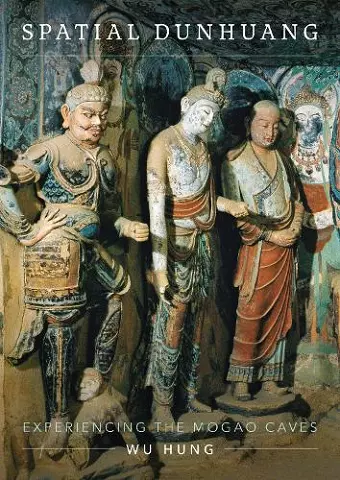Spatial Dunhuang
Experiencing the Mogao Caves
Format:Hardback
Publisher:University of Washington Press
Published:28th Feb '23
Currently unavailable, and unfortunately no date known when it will be back

A path-breaking new study of a celebrated site of Buddhist art
Constructed over a millennium from the fourth to fourteenth centuries CE near Dunhuang, an ancient border town along the Silk Road in northwest China, the Mogao Caves comprise the largest, most continuously created, and best-preserved treasure trove of Buddhist art in the world. Previous overviews of the art of Dunhuang have traced the caves' unilinear history. This book examines the caves from the perspective of space, treating them as physical and historical sites that can be approached, entered, and understood sensually. It prioritizes the actual experiences of the people of the past who built and used the caves.
Five spatial contexts provide rich material for analysis: Dunhuang as a multicultural historic place; the Mogao Cave complex as an evolving entity; the interior space of caves; interaction of the visual program with architectural space; and pictorial space within wall paintings that draws viewers into an otherworldly time. With its novel approach to this repository of religious art, Spatial Dunhuang will be a must-read for anyone interested in Buddhist art and for visitors to Dunhuang.
"In Spatial Dunhuang, the temporal and spatial lines have been so well organized that it is still accessible to those unfamiliar with Dunhuang and/or Chinese art despite the fact that more than 20 caves are discussed in considerable detail. For specialists, some of the issues raised in this book may stimulate further academic studies such as the interrelationship between ideas of the afterlife and rituals in Dunhuang with the religious practices at Mogao. At the same time, nearby cave sites such as the Yulin Caves and the Western Caves of a Thousand Buddhas can be taken into consideration in a bigger spatial picture."
* Asian Studies Review *"With a seamless blend of insights from religion, art history, literature, and archaeology, Wu Hung’s latest contribution, Spatial Dunhuang: Experiencing the Mogao Caves, stands as a pioneering scholarly endeavor. . . Overall, this richly illustrated book transforms the foundational approach of Dunhuang studies by pivoting toward the significance of space within the Mogao Caves. It caters not only to academic audiences but also to broader readerships."
* H-Net Reviews *"This book retells the story of images within 'space,' revealing seemingly arbitrary but conceptually significant connections between cave spaces, image distributions, themes, and forms of expression."
* Religious Studies Review *"The malleable concept of space allows for an interdisciplinary engagement with fields of history, archaeology, religion, architecture, and conservation, while benefiting from the larger field of Dunhuang studies. . . [C]lear and engaging prose, the high-quality images, the definition of key terms, and the translation of important textual sources make this book indispensable for any student of the Mogao caves."
* Journal of Asian Studies *"[A]n accessible and thought-provoking study that will doubtless elicit much interest in Dunhuang art from a broad range of readers. Its accessibility is enhanced by a glossary of terms in the introduction, thoughtful illustrations, and the equal weight that is given to history and historiography."
* JAOS Journal of the American Oriental Society *"[O]ffers a fresh direction for other heritage scholars exploring similar issues. It is highly recommended for individuals interested in Buddhist cultural heritage sites and the Silk Road, particularly those in East Asia."
* International Journal of Heritage Studies *"[R]epresents a paradigmatic contribution to the study of Dunhuang art. It presents both new, persuasive interpretations of specific artworks and brings forward methodological reflections on the analysis of cave space."
* Chinese Studies InternationISBN: 9780295750200
Dimensions: unknown
Weight: 1315g
392 pages